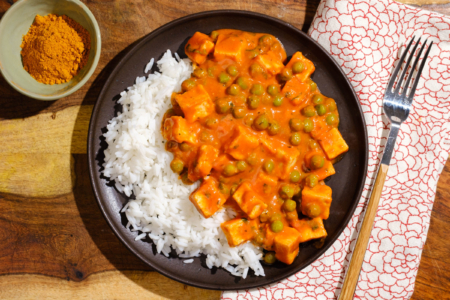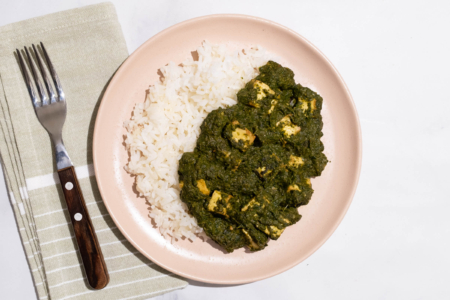Tender, succulent, and tasty shrimp is a healthy way to get a large amount of protein that’s relatively low fat leaving you satisfied and full for hours. Unfortunately, the line between perfectly cooked punchy shrimp and inedible balls of rubber is razor-thin and enough of a challenge to frighten off even the most ardent fans of this spectacular shellfish. Fortunately, with the unparalleled precision and accuracy of Suvie and sous vide cooking, shrimp is now incredibly easy. Here’s how to prepare perfectly tender and tasty sous vide shrimp every time.
| Temperature | Time | Result |
| 125˚F* | 30 minutes | Very tender and juicy |
| 130°F | 30 minutes | Medium, tender, juicy, and slightly firm |
| 135°F | 30 minutes | Medium well, juicy and pleasantly firm |
Follow this link to find out more information about Suvie cooking times and temperatures.
Ingredients and Tools
- Shrimp (about 1 lbs)
- Butter or olive oil
- Salt
- Garlic (optional)
- Herbs (optional)
- Sauce or marinade (optional)
- Baking Soda (optional)
Equipment
- Suvie or sous vide wand
- A large pot (if using a sous vide wand)
- Vacuum sealer and bags or Freezer safe sealable plastic bags
Directions
If you’re using a sous vide wand, pre-heat your water bath to the desired temperature
Pat the shrimp dry with some paper towels and place in a bowl. Sprinkle with salt and toss to coat. If you prefer a more traditional bouncy firmness add a generous sprinkle of baking soda during this step.
Place shrimp in a plastic bag along with a splash of olive oil or a small amount of butter along with any herbs or garlic you want to add. If you are cooking your shrimp in sauce add it to the bag as well. Vacuum seal the bag (Follow our guide if you are using the water displacement method). Try and ensure that the shrimp are in a single layer and not bunched up, this will ensure that they are cooked uniformly.

If you are using Suvie, use the following settings:
Suvie Cook Settings
Bottom Zone: Sous Vide at 125-135°F for 30 minutes (based on desired doneness)
Top Zone: Sous Vide at 125-135°F for 30 minutes (based on desired doneness)
Once the cook is finished, remove the shrimp from the water bath or pan.

Finishing
The great thing about sous vide shrimp is that it can be enjoyed cold or hot straight out the bag without any further finishing steps. However, if you would like to add a little bit of exterior browning to the shrimp, follow these steps:
If you’re using Suvie
Remove shrimp from the bag and pat dry with a paper towel. Remove water from Suvie pan and dry. Add shrimp to the pan and broil in Suvie for 5 minutes flipping halfway through.
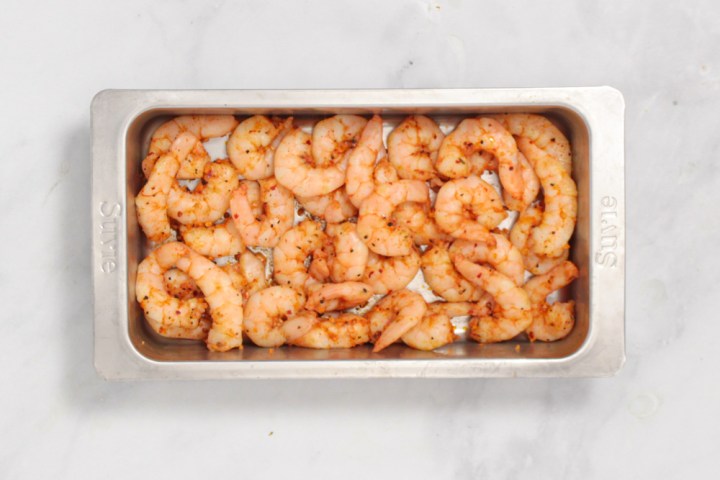
If you’re not using Suvie
Cook shrimp under a hot grill for a few minutes flipping halfway through.
Alternatively, if you’re serving your shrimp with a pan sauce heat up the sauce in a skillet and add the shrimp. Stir the shrimp into the sauce and remove from heat. Serve immediately.
Recipes to try
Shrimp Satay
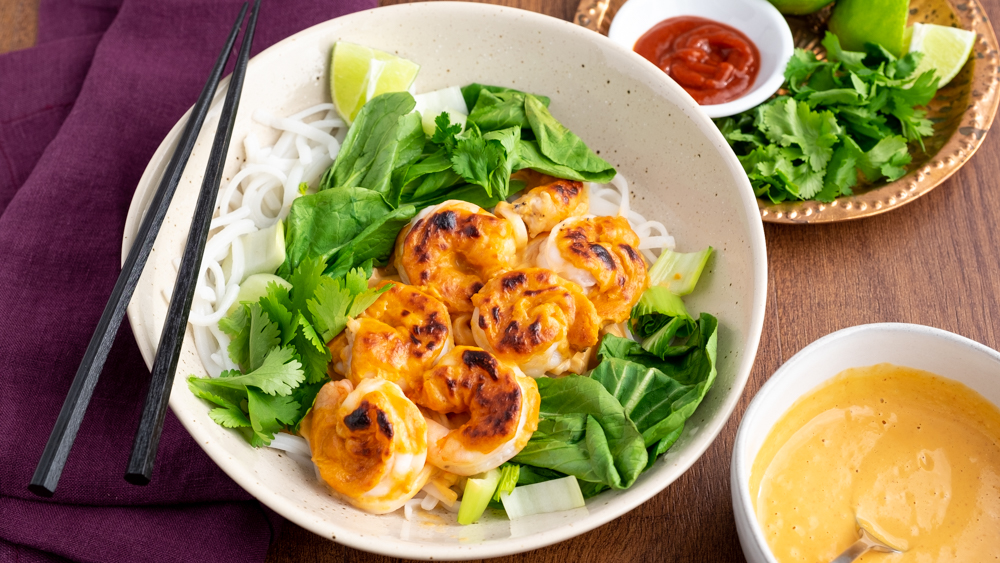
Shrimp Scampi
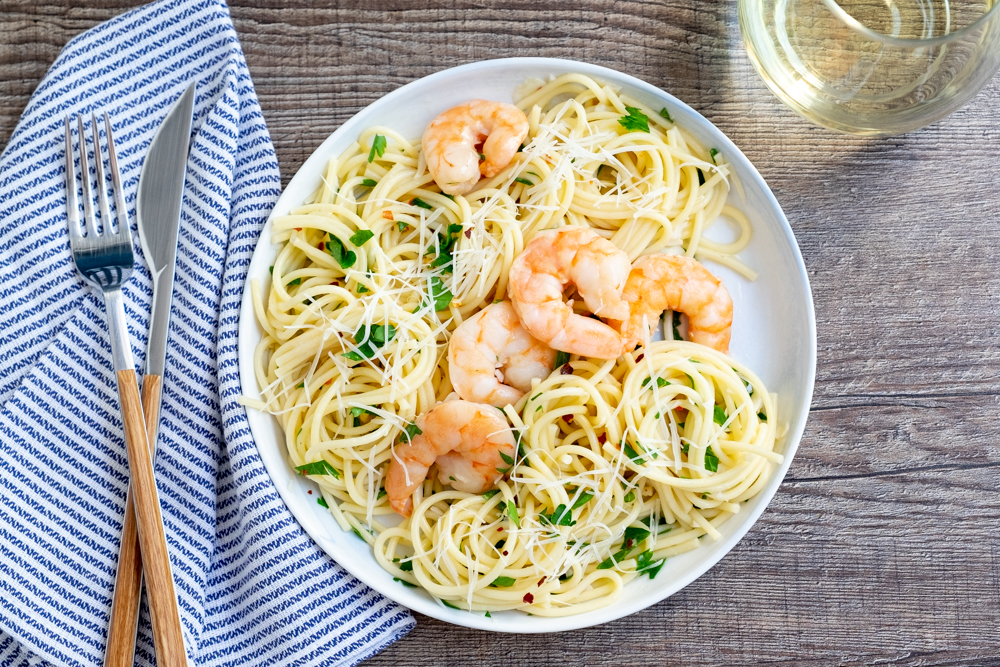
Mediterranean Shrimp with Orzo
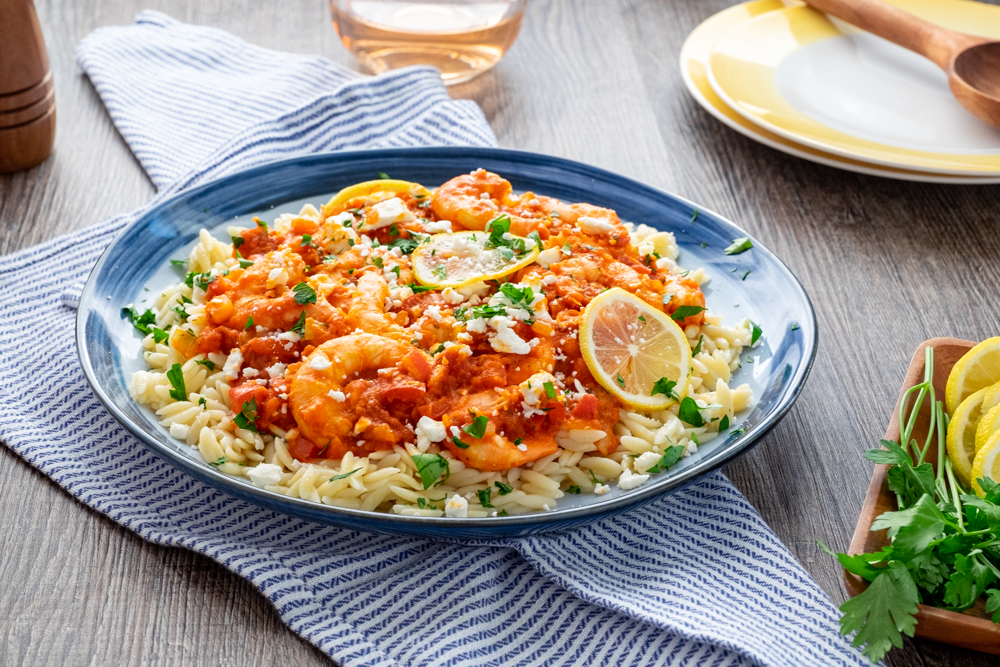
Southwestern Shrimp Bowl
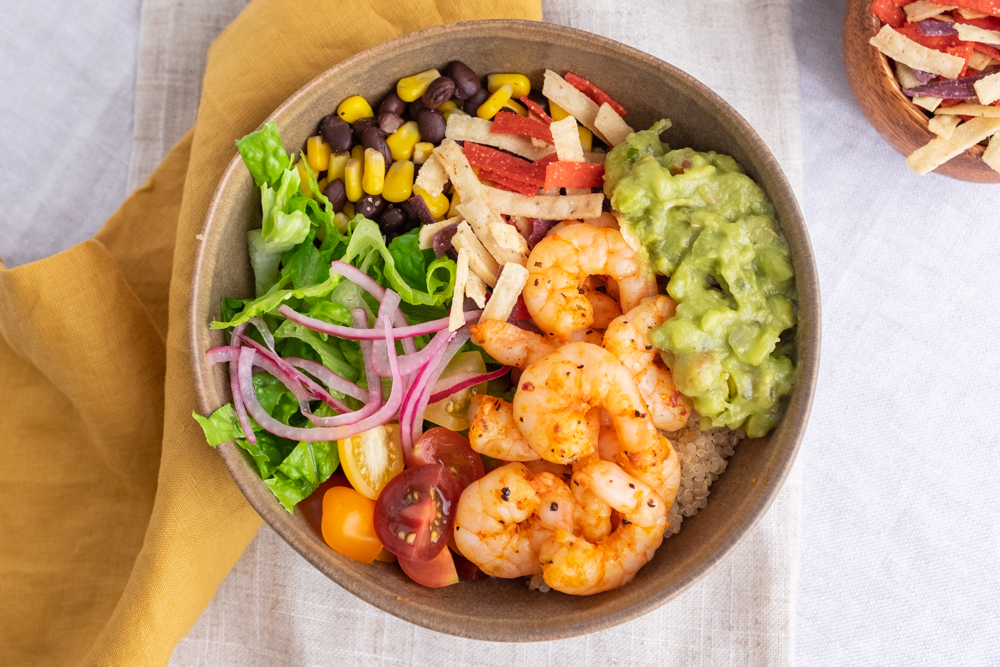
Shrimp and Spinach over Whole-Wheat Pasta

FAQs
Are the cooking temperatures safe?
Our recommended cooking temperatures for Sous vide and Suvie are lower than what the USDA recommends, however, cooking times and temperatures are long enough and high enough for “pasteurization” to make your food safe. The USDA recommendations indicate the temperature needed to instantly kill food pathogens. By cooking for a longer time at a lower temperature we are able to achieve the same effect. However, high-risk populations should use extra caution when preparing foods below the USDA recommended temperatures.
Can I use any type of plastic bag?
You can, however, make sure that they are made from polyethylene. Some branded plastic bags are made using polyethylene which is a BPA and dioxin free plastic that can safely handle sous vide cooking temperatures up to 190°F. Some generic branded plastic bags are made using cheaper polyvinyl chloride (PVC) which cannot handle high temps and contains chemicals that can leach into food.
Prawns or shrimp?
Despite the fact that they are two distinct species, in cooking the terms “prawn” and “shrimp” are sometimes used interchangeably. In the case of this recipe, we are referring to the smaller species. However, feel free to use larger prawns, just be sure to increase the cooking time a little to make up for the size difference.
Where can I get vacuum sealed proteins?
If you don’t want to fuss with vacuum sealers and ziplock bags you can skip the store and order the Suvie Protein Box. Just put together your ideal combination of preseasoned, portioned, and vacuum-packed high-quality meat, poultry, or fish. We deliver it to you frozen in a carefully-packed box.
Can I use frozen shrimp?
Yes! This technique will work with frozen shrimp. If you’re cooking straight from the freezer just add an additional 30 minutes to the sous vide time.
Can I refrigerate the shrimp after the sous vide process and eat it later
Sous vide shrimp can be enjoyed hot or cold.
Can I use shell-on shrimp?
Yes! This recipe will work with shell-on shrimp, just add around 5 minutes to the cook time to accommodate for the shells.


